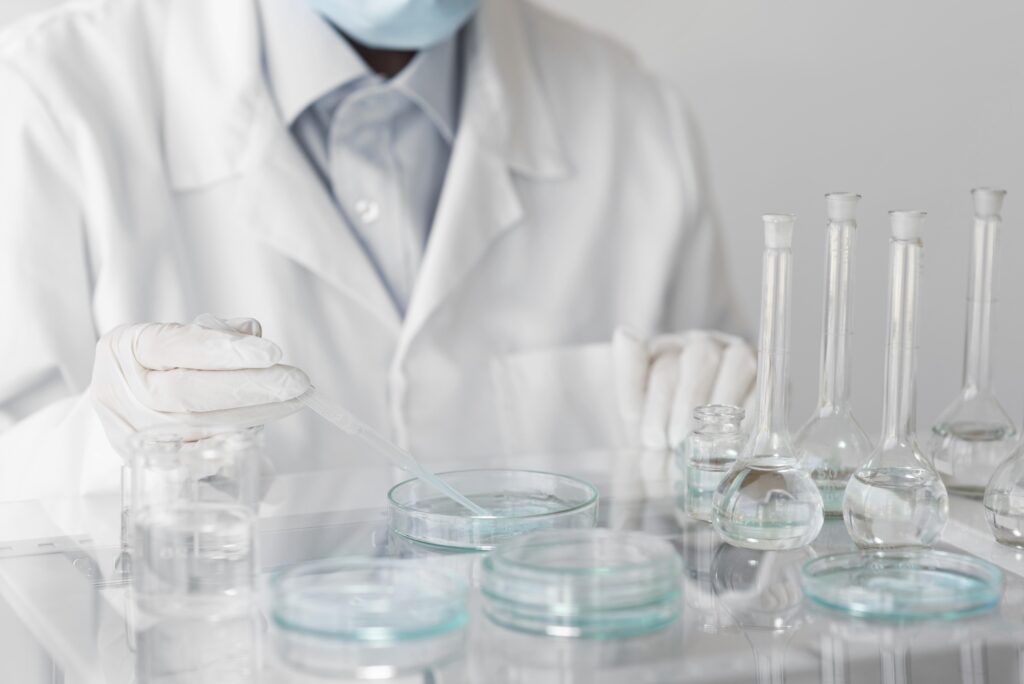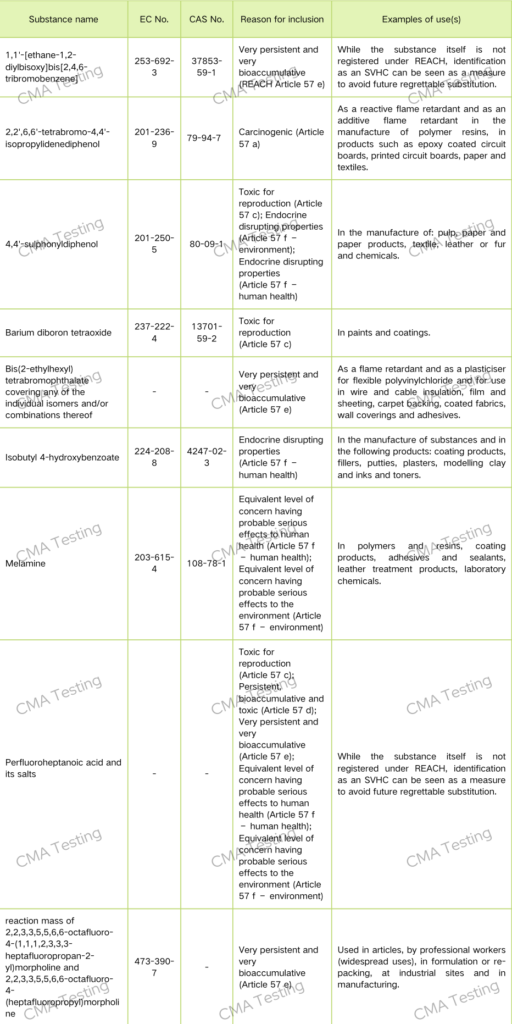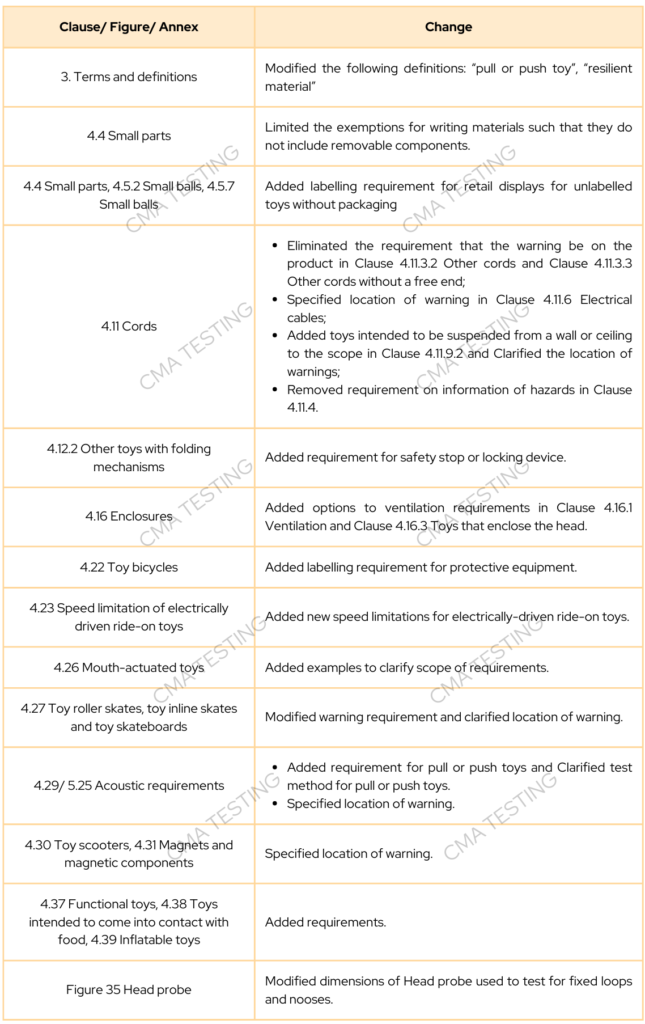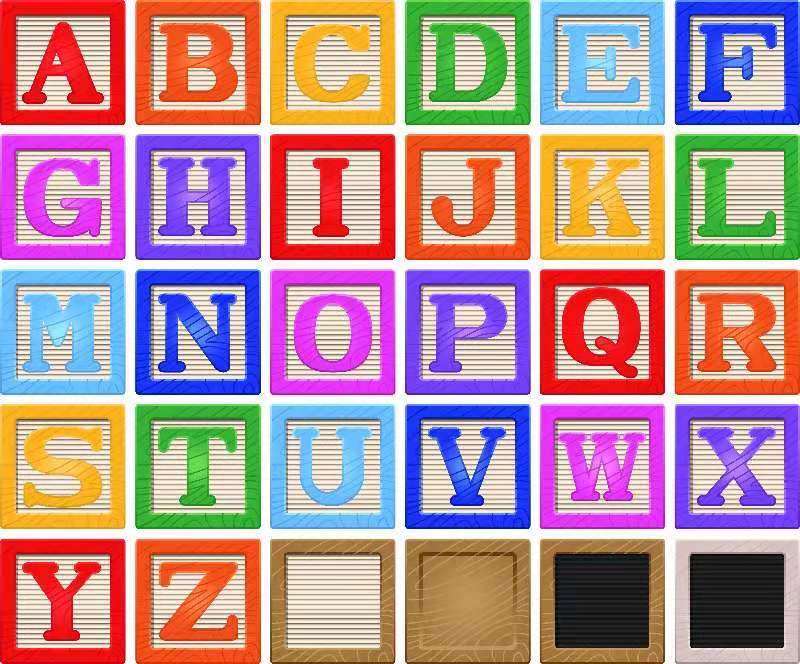
European Union has issued the Commission Regulation (EU) 2023/1442 to amend Commission Regulation (EU) No 10/2011 (on plastic materials and articles intended to come into contact with food) on 12 July, 2023.
The amendment amends table 1 (Union list of authorized monomers, other starting substances, macromolecules obtained from microbial fermentation, additives and polymer production aids) and table 2 (Group restriction of substances) of Annex I of EU No 10/2011. Below shows highlights of the amendment:
- Remove entry 96 (wood flour and fibers, untreated) and entry 121 (salicylic acid) from table 1;
- Add new substances:
- entry 1078 (tris(2-ethylhexyl) benzene-1,2,4-tricarboxylate)
- entry 1080 ((triethanolamine- perchlorate, sodium salt) dimer)
- entry 1081 (N, N-bis (2-hydroxyethyl) stearylamine partially esterified with saturated C16/C18 fatty acids)
- entry 1082 (Phosphoric acid, mixed esters with 2-hydroxyethyl methacrylate)
- entry 1083 (Benzophenone-3,3′,4,4′- tetracarboxylic dianhydride (‘BTDA’))
- Revise limits of several phthalates
Table 1 (Union list)
| Phthalates | EU No 10/2011 | EU 2023/1442 amendment |
| DBP (Entry 157) | SML < 0.3 mg/kg | SML <0.12 mg/kg |
| BBP (Entry 159) | SML <30 mg/kg | SML <6 mg/kg |
| DEHP (Entry 283) | SML <1.5 mg/kg | SML <0.6 mg/kg |
| DINP (Entry 728) | — | Not to be used in combination with food contact material substances DBP, BBP, DEHP, or DIBP |
Table 2 (group restriction)
| Phthalates | EU No 10/2011 | EU 2023/1442 amendment |
| Group restriction of DINP and DIDP (Entry 26) | SML <9 mg/kg | SML <1.8 mg/kg |
| Group restriction of substances includes phthalates (Entry 32) | 20 substances | 22 substances (Add tris(2-ethylhexyl) benzene-1,2,4-tricarboxylate and DIBP) |
| Group restriction of DEHP equivalent (Entry 36) | — | SML of DBP*5 + DIBP*4 + BBP*0,1 + DEHP*1 shall be <0.6 mg/kg |

Background
Plastic is definitely one of the most important inventions in human history: nowadays, plastic materials are widely used in many circumstances. Their usage ranges from composite materials in aircraft to plastics in general consumer products. Despite their versatility, plastic also causes one of the biggest environmental crises in the 21st century, due to their durability. In order to deal with this worldwide problem, a resolution was passed by the representatives from 175 countries at the fifth session of the United Nations Environment Assembly in March 2022 to complete the drafting of a global treaty that aims at alleviating the serious problem of plastic pollution by 20241.
Inside this Article
- Regulating plastic products in Hong Kong
- About definition of plastics in The Product Eco-Responsibility (Amendment) Bill 2023
- Composition analysis of disposable tableware
1. Regulating plastic products in Hong Kong
Like other countries, the plastic waste problem is also severe in Hong Kong. Around 2,300 tonnes of waste plastics were disposed of daily at landfills in 2021, accounting for about 21% of total municipal solid waste, and had increased by around 37% since 2008. Of all the waste plastics, plastic/polyfoam tableware constitutes about 10%2. In other words, around 230 tonnes (equivalent to the weight of 19 double-decker buses) of plastics tableware, which were used only once, were disposed of in the landfill each day.
For this reason, the Hong Kong Environmental Protection Department conducted a two-month public consultation on the Scheme on Regulation of Disposable Plastic Tableware on 9 July 2021. Among the 8,552 submissions received, over 90% supported in principle the introduction of legislation to regulate disposable plastic tableware progressively in Hong Kong2, which clearly showed consent among general public on this topic. Hong Kong Government then submitted the Product Eco-Responsibility (Amendment) Bill 2023 in February 2023 to Legislative Council to propose regulating nine types of disposable plastic tableware, including expanded polystyrene (EPS) tableware, straws, stirrers, cutlery, plates, cups, cup lids, food containers, and food container covers, in two phases. (Table 1)
| Types of Disposable Plastic Tableware | Phase 1 | Phase 2 |
| Polyfoam tableware | Prohibits the sale to end-customers and Prohibits the provision at catering premises to customers for dine-in and takeaway services | |
| Straws | ||
| Stirrers | ||
| Cutlery (forks, knives, spoons) | ||
| Plates | ||
| Cups | Prohibits the provision at catering premises to customers for dine-in services | Prohibits the sale to end-customers Prohibits the provision at catering premises to customers for dine-in and takeaway services |
| Cup lids | ||
| Food containers | ||
| Food container covers | ||
| Proposed implementation timetable | Fourth quarter of 2023 at the earliest | Year 2025 tentatively |

2. About definition of plastics in The Product Eco-Responsibility (Amendment) Bill 2023
For the purposes of the amendment Bill 2023, plastic means material consisting of a polymer, excluding natural polymer that has not been chemically modified3. That is if a polymer which can be found in natural environment (such as cellulose, hemicelluloses, lignin, starch, keratin etc.), it will not be regarded as a plastic; otherwise, it is plastic. For example, wood, bamboo, and bagasse, which contain only cellulose, hemicelluloses, or lignin as polymer materials, will not be regarded as plastics; while some well-known biodegradable materials such as polylactic acid (PLA) or polybutylene succinate (PBS) will be regarded as plastic because they are not naturally occurred.
However, use of plastic material in disposable tableware is allowed by the Bill in some circumstances, as long as the plastic material does not function as a major structural component (such as printing ink, glue, or water-based barrier coating used in paper-based products)note 1.
3. Composition analysis of disposable tableware
Manufacturers shall ensure their disposable tableware products meet statutory requirements after the regulation becomes effective. Those who fail to comply are liable on conviction to a fine. To ensure disposable tableware is plastic free, the most efficient way is to analyse the product by Attenuated Total Reflection Fourier transform infrared (ATR-FTIR) spectroscopy. If water-based barrier coating is used in paper-based product, it is necessary to test according to Water-based Coated Paper Cup (including Water-based Coated Carton Paper (T/CPA 001-2021).
It is better to test your disposable tableware products before the regulation comes to effective. You are welcome to contact us if you would like to have more information.
Note 1 Those interpretations are based on our understanding on the literal meaning of the Product Eco-Responsibility (Amendment) Bill. The right of final interpretation shall belong to the law enforcement units or judiciary.
- Resolution adopted by the United Nations Environment Assembly on 2 March, United Nations Environment Assembly of the United Nations Environment Programme 2022 (UNEP/EA.5/Res.14)
- Legislative Council Brief of Product Eco-responsibility (Amendment) Bill 2023
- Product Eco-Responsibility (Amendment) Bill 2023
For enquiries (HK Office) :
Mr. Joey Kwok
Tel: (+852) 2690 8255 / (+852) 6059 9644 / WhatsApp: 6059 9644
Email : joeykwok@cmatesting.org

17 January 2023 – ECHA has added nine chemicals to the Candidate List because of their hazardous properties. They are used for example in flame retardants, paints and coatings, inks and toners, coating products, plasticisers and in the manufacture of pulp and paper.
The Candidate List of substances of very high concern now contains 233 entries for chemicals that can harm people or the environment.
Details please find below table:

Please refer to the ECHA website for more details:
https://echa.europa.eu/substances-of-very-high-concern-identification
Possessing the latest equipment and a dynamic team of experts, CMA Testing offers you a comprehensive solution of all SVHC Screening services.

ISO 8124-1:2022—largely based upon existing standards in the European Union (EN 71-1) and the United States (ASTM F963)—specifies acceptable criteria for the structural characteristics of toys, including shape, size, contour, spacing, and properties specific to certain toy categories. ISO 8124-1:2022 is applicable to all toys. According to the international standard, this is any product or material designed or clearly intended for use in play by children under 14 years of age.
ISO 8124-1:2022 revises the 2018 edition of the same standard for the safety of physical and mechanical properties of toys. It also incorporates the amendments made to the 2018 edition, ISO 8124-1:2018/Amd.1:2020 and ISO 8124-1:2018/Amd.2:2020. Some changes to ISO 8124-1:2022 include:

Contact us for more information on the latest standards in the toy industry worldwide.

October 3, 2022 , The Consumer Product Safety Commission (CPSC) has unanimously approved a final rule for the 16 CFR 1262 safety standard for magnets, including loose or separable magnets used in non-toy products, including those used for entertainment or stress relief, or jewelry. These requirements are intended to reduce or eliminate an unreasonable risk of death or injury to consumers who ingest one or more hazardous magnets. All applicable products manufactured or imported on or after October 21, 2022 will need to comply with this rule.
The rule designed to address magnets that are outside the scope of the ASTM F963-17 toy standard. Children’s toys that are subject to and already comply with the toy safety standard are exempt from this new rule. As toys containing magnets must meet such requirements as part of the Federal toy safety standard, 16 CFR 1250 (ASTM F963-17). But Children’s non-toy products containing magnets shall comply with 16 CFR 1262.
Examples of non-toy items that will be covered under 16 CFR 1262 include a consumer product that is designed, marketed, or intended to be used for entertainment, jewelry (including children’s jewelry), mental stimulation, stress relief, or a combination of these purposes, and that contains one or more loose or separable magnets. The final rule does not include items that are sold and/or distributed solely to school educators, researchers, professionals, and/or commercial or industrial users exclusively for educational, research, professional, commercial, and/or industrial purposes.
Related info:Children’s Product Certificate (CPC) Testing Service for E-commerce platform Selling

Children’s Product Certificate (CPC) is applicable to the consumer product designed or intended primarily for children 12 years of age or younger. Toys and children’s products listed on e-commerce platform for US marketplace shall be accompanied with the CPC. This requirement helps ensure products are compliant with local laws and safe for customers. If you do not submit the documents requested it may impact your ability to list these products on that.
The certificate is essentially a “Declaration Letter” signed and issued by the manufacturer/ importer to declare that the products comply with all applicable local laws and safety regulations. It must be based on the test results from a third-party testing laboratory accredited by the Consumer Product Safety Commission (CPSC).
Testing Services include but not limit to:
- ASTM F963 Physical and Mechanical Properties
- ASTM F963 Flammability
- ASTM F963 Heavy Elements
- 16 CFR 1303 Lead
- CPSIA – Phthalates / Lead Content
- 16 CFR 1501/ 1510/ 1511 Small Parts/ Rattles/ Pacifier
- 16 CFR 1610 Flammability of clothing textile
CMA Testing has rich experience on CPC testing and testing solutions for toys and children’s products. Moreover, we provide drafting CPC certificate service after complete the test. CMA Testing – Yubiao Testing Officially Joins Amazon SPN! For more details, please contact us for support.

17 January 2022, ECHA published four new substances has been added to the Candidate List and now it contains 223 entries. CMA Testing offers you a comprehensive solution of all SVHC Screening services.
| No. | Substance Name | CAS No. | SVHC property |
|---|---|---|---|
| 1. | 6,6′-di-tert-butyl-2,2′-methylenedi-p-cresol | 119-47-1 | Toxic for reproduction (Article 57 c) |
| 2. | tris(2-methoxyethoxy)vinylsilane | 1067-53-4 | Toxic for reproduction (Article 57 c) |
| 3. | (±)-1,7,7-trimethyl-3-[(4-methylphenyl)methylene]bicyclo[2.2.1]heptan-2-one covering any of the individual isomers and/or combinations thereof (4-MBC) | – | Endocrine disrupting properties (Article 57 f – human health) |
| 4. | S-(tricyclo(5.2.1.02,6)deca-3-en-8(or 9)-yl O-(isopropyl or isobutyl or 2-ethylhexyl) O-(isopropyl or isobutyl or 2-ethylhexyl) phosphorodithioate | 255881-94-8 | PBT (Article 57 d) |
Please refer to the ECHA website for more details:
https://echa.europa.eu/substances-of-very-high-concern-identification
Possessing the latest equipment and a dynamic team of experts, CMA Testing offers you a comprehensive solution of all SVHC Screening services.

ECHA has published proposals to identify 4 substances as Substances of Very High Concern (SVHC) for consultation on 03 Sep 2021. The consultation date will be end on 18 Oct 2021.
The table lists those 4 newly proposed SVHCs and their properties:
| No. | Substance Name | EC No. | CAS No. | SVHC property |
|---|---|---|---|---|
| 1. | (±)-1,7,7-trimethyl-3-[(4-methylphenyl)methylene]bicyclo[2.2.1]heptan-2-one covering any of the individual isomers and/or combinations thereof (4-MBC) | – | – | Endocrine disrupting properties (Article 57(f) – human health) |
| 2. | 6,6′-di-tert-butyl-2,2′-methylenedi-p-cresol (DBMC) | 204-327-1 | 119-47-1 | Toxic for reproduction (Article 57 c) |
| 3. | S-(tricyclo[5.2.1.0’2,6]deca-3-en-8(or 9)-yl) O-(isopropyl or isobutyl or 2-ethylhexyl) O-(isopropyl or isobutyl or 2-ethylhexyl) phosphorodithioate | 401-850-9 | 255881-94-8 | PBT (Article 57 d) |
| 4. | Tris(2-methoxyethoxy)vinylsilane | 213-934-0 | 1067-53-4 | Toxic for reproduction (Article 57 c) |
Please refer to the ECHA website for more details:
https://echa.europa.eu/substances-of-very-high-concern-identification
Possessing the latest equipment and a dynamic team of experts, CMA Testing offers you a comprehensive solution of all SVHC Screening services.

On 8 Jul 2021, The European Chemical Agency (ECHA) added 8 new substances as Substances of Very High Concern (SVHC) to the Candidate List. Therefore, there are total 219 SVHCs in candidate list.
Below table lists out 8 new Substances of Very High Concern (SVHCs) with their SVHC properties:
| Substance Name | EC number | CAS Number | SVHC property |
|---|---|---|---|
| 1,4-dioxane | 204-661-8 | 123-91-1 | – Carcinogenic(Article 57a) – Equivalent level of concern having probable serious effects to the environment (Article 57f-environment) – Equivalent level of concern having probable serious effects to human health (Article 57f –human health) |
| 2,2-bis(bromomethyl)propane1,3-diol (BMP), 2,2-dimethylpropan-1-ol, tribromo derivative/3-bromo-2,2-bis(bromomethyl)-1-propanol (TBNPA), 2,3-dibromo-1-propanol (2,3-DBPA) | 221-967-7, 253-057-0, 202-480-9 | 3296-90-0, 36483-57-5, 1522-92-5, 96-13-9 | Carcinogenic (Article 57a) |
| 2-(4-tert-butylbenzyl)propionaldehyde and its individual stereoisomers | / | / | Carcinogenic (Article 57a) |
| 2-(4-tert-butylbenzyl)propionaldehyde and its individual stereoisomers | 201-025-1 | 77-40-7 | – Endocrine properties (Article 57(f) – environment) – Endocrine disrupting properties (Article 57(f) – human health) |
| Glutaral | 203-856-5 | 111-30-8 | Respiratory sensitising properties (Article 57(f) – human health) |
| Medium-chain chlorinated paraffins (MCCP) [UVCB substances consisting of more than or equal to 80% linear chloroalkanes with carbon chain lengths within the range from C14 to C17] | / | / | – PBT (Article 57d) – vPvB (Article 57e) |
| Orthoboric acid, sodium salt | 237-560-2 | 13840-56-7 | Toxic for reproduction (Article 57c) |
| Phenol, alkylation products (mainly in para position) with C12-rich branched or linear alkyl chains from oligomerisation, covering any individual isomers and/ or combinations thereof (PDDP) | / | / | – Toxic for reproduction (Article 57c) – Endocrine disrupting properties (Article 57(f) – environment) – Endocrine disrupting properties (Article 57(f) – human health) |
Please refer to the ECHA website for more details: https://echa.europa.eu/candidate-list-table
Possessing the latest equipment and a dynamic team of experts, CMA Testing offers you a comprehensive solution of all SVHC Screening services.
In addition to testing services on a wide range of consumer products, CMA Testing also provide inspection and factory audit services. Please contact us!

